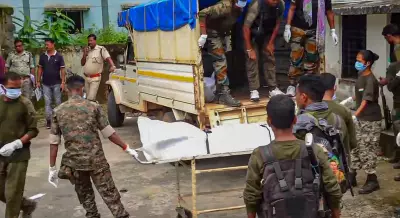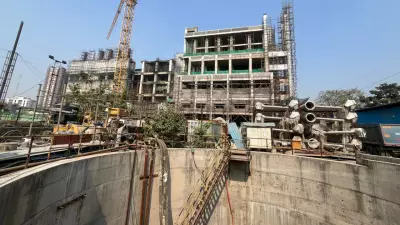Politics
3 Naxalites, Including Woman, Killed in Sukma Encounter with Security Forces
A woman among three Naxalites was killed in an encounter with security forces in Chhattisgarh's Sukma district on December 18. Police confirm the operation was based on specific intelligence.
Business
Nifty Nears Record High But Smallcaps Lag 12%: Inside India's Two-Speed Market
As Nifty 50 nears its peak, the smallcap index lags 12% behind. Experts analyze the divergence in risk appetite, liquidity pressures, and whether this is a cyclical or structural shift. Read more.
World
Mumbai's Rs 2,000-Crore Push to Revive Polluted Mithi River
Mumbai launches two major projects worth Rs 2,000 crore to tackle sewage and flooding in the Mithi River. The plan includes a diversion tunnel and tidal management systems.
Entertainment
Raat Akeli Hai 2 Review: Nawazuddin Siddiqui's Slow-Burn Thriller Falls Short on Tension
Raat Akeli Hai: The Bansal Murders, the Netflix sequel starring Nawazuddin Siddiqui, is a sincere but uneven crime drama that lacks the gripping tension of the original. Read our full review.
Sports
Lifestyle
Health
Viral Kickboxing Video: Army Vet's Fitness Stuns Internet
A 61-year-old retired Lieutenant Colonel's intense kickboxing routine goes viral on X, drawing playful Mahatma Gandhi comparisons. Discover the story behind the fit veteran's discipline.
Diabetes Cases Projected to Reach 900 Million by 2050
New projections warn diabetes cases could hit 900 million globally by 2050, driven by modern lifestyles. Learn the causes, impacts, and prevention strategies to combat this silent pandemic.
Delhi roads see less traffic after GRAP-4 implementation
Delhi government reports a significant reduction in vehicular movement following the imposition of GRAP-4 anti-pollution measures. Read the full impact assessment here.
Six Kids Get HIV from Tainted Blood in Satna; 3 Suspended
Madhya Pradesh govt suspends three, including blood bank in-charge, after six children contract HIV via transfusion in Satna. Read the shocking details and official action.
David Caprio's Skin Cancer Scare: A Vital Warning
David Caprio, son of Judge Frank Caprio, shares a chilling skin cancer biopsy story. Learn about skin cancer risks, types like melanoma, and crucial prevention tips to protect yourself and family.
Technology
Get Updates
Subscribe to our newsletter to receive the latest updates in your inbox!
We hate spammers and never send spam










































